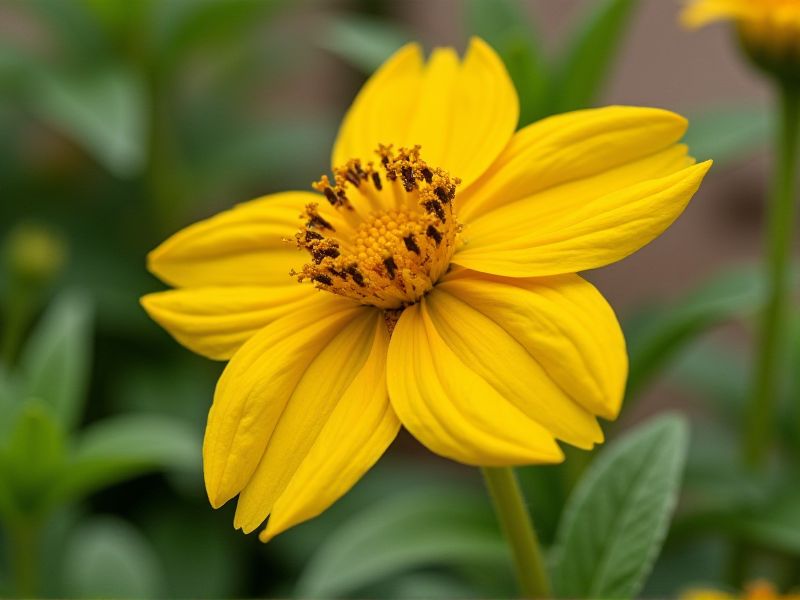
Perennial plants that flower annually are known for their ability to bloom year after year while retaining their root system. These resilient plants often include popular species such as daylilies (Hemerocallis), coneflowers (Echinacea), and peonies (Paeonia). They provide a consistent display of color and beauty in gardens, often requiring minimal maintenance once established. Your garden can benefit from the diversity of these perennials, as they attract pollinators like bees and butterflies, enhancing local biodiversity. Ideal for various climates, these plants thrive in a range of soil conditions and can provide lasting beauty with proper care.
List of some Perennial plants that flower annually
- Peony (Paeonia)
- Daylily (Hemerocallis)
- Coneflower (Echinacea)
- Black-eyed Susan (Rudbeckia)
- Lavender (Lavandula)
- Iris (Iris)
- Bleeding Heart (Dicentra)
- Yarrow (Achillea)
- Shasta Daisy (Leucanthemum)
- Hostas (Hosta)
Important things about Perennial plants that flower annually
Lifespan
Perennial plants that flower annually can offer both beauty and longevity to your garden. These plants, such as daylilies and peonies, return year after year, often increasing in vigor and bloom with each season. Their lifespan can span several years, with some varieties thriving for decades when well-maintained. By selecting the right species for your climate and soil conditions, you can enjoy a vibrant display of flowers annually, making them a smart investment for any landscape.
Blooming Period
Perennial plants are remarkable for their ability to flower year after year, enriching gardens with vibrant colors and textures. These plants typically bloom in cycles depending on their species and local climate conditions, with popular varieties including peonies, coneflowers, and daylilies showcasing their beauty during spring and summer months. Proper care, such as mulching and deadheading, can enhance your plants' blooming periods, ensuring a lush display for multiple seasons. Understanding the specific blooming habits of your perennial plants can help you design a landscape that maintains visual interest year-round.
Maintenance Requirements
Perennial plants that flower annually provide vibrant blooms year after year, requiring specific maintenance to thrive. Regular watering is essential, particularly during dry spells, to ensure consistent moisture in the soil. Seasonal pruning helps maintain plant health by removing dead or damaged stems and encourages new growth. Fertilizing your perennials with a balanced nutrient mix in early spring boosts blooming potential and overall vigor.
Soil Preferences
Perennial plants that flower annually thrive best in well-draining, loamy soil enriched with organic matter. These plants prefer a slightly acidic to neutral pH, typically ranging from 6.0 to 7.0, which supports optimal nutrient availability. To enhance growth, consider incorporating compost or aged manure into your soil, as this boosts microbial activity and fertility. Proper soil preparation not only encourages robust root development but also ensures vibrant blooms each year.
Sunlight Needs
Perennial plants that flower annually bring vibrant color and resilience to your garden, thriving in sunlight while returning each year. Examples such as coneflowers (Echinacea), black-eyed Susans (Rudbeckia), and peonies (Paeonia) not only beautify landscapes but also attract pollinators like bees and butterflies. These plants typically require a minimum of six hours of sunlight daily to bloom vigorously, enhancing their growth and flower production. By choosing the right variety for your climate and soil conditions, you can enjoy a flourishing display of flowers season after season.
Watering Habits
Perennial plants that flower annually thrive with a consistent watering schedule, as they benefit from moist but well-drained soil. It's essential to water these plants deeply, allowing the soil to dry slightly between watering sessions, which encourages deep root growth and enhances drought resistance. Depending on your climate and soil type, adjusting watering frequency--typically once every week or two--can optimize their blooming potential. You should also consider using mulch to retain moisture and regulate soil temperature, ensuring a vibrant and healthy flowering display year after year.
Fertilization Schedule
To promote vibrant blooms in perennial plants that flower annually, a well-structured fertilization schedule is essential. Begin with a balanced, slow-release fertilizer in early spring when new growth emerges, ensuring nutrients are readily available for the plants as they awaken from dormancy. Mid-summer, consider supplementing with a water-soluble fertilizer high in phosphorus to support flowering; this nutrient encourages robust bud development. Finally, as fall approaches, a low-nitrogen fertilizer helps strengthen root systems and prepares your perennials for the winter months.
Pest Resistance
Perennial plants that flower annually serve as effective options for pest resistance in gardens and landscapes. Varieties such as Echinacea, Rudbeckia, and Salvia exhibit natural resistance to common pests due to their robust structures and aromatic properties, which deter harmful insects. Utilizing these plants not only enhances your garden's aesthetics but also promotes biodiversity by providing habitats for beneficial pollinators. Incorporating pest-resistant perennials encourages sustainable gardening practices while ensuring a vibrant and thriving floral display each year.
Propagation Methods
Propagation methods for perennial plants that flower annually include division, layering, and cuttings. Division involves carefully separating a mature plant's root system into multiple sections, allowing each division to grow independently while ensuring they maintain viable roots and shoots. Layering, on the other hand, encourages new roots to form from stems that are bent down to the soil, creating new plants that are physically attached until separated. Lastly, taking cuttings involves snipping healthy stems or leaves and encouraging them to root in a suitable medium, facilitating the propagation of desirable perennials in your garden.
Seasonal Dormancy
Perennial plants exhibit a fascinating seasonal dormancy, a survival strategy that allows them to withstand adverse environmental conditions. During dormancy, these plants conserve energy by halting growth and shedding leaves, making them resilient to winter chills or summer droughts. When environmental conditions become favorable again, typically with the arrival of spring, these perennials revive, producing vibrant blooms that attract pollinators. Understanding this cycle not only highlights the adaptability of perennial plants but also emphasizes the importance of proper care and cultivation to ensure their health during dormant phases.
